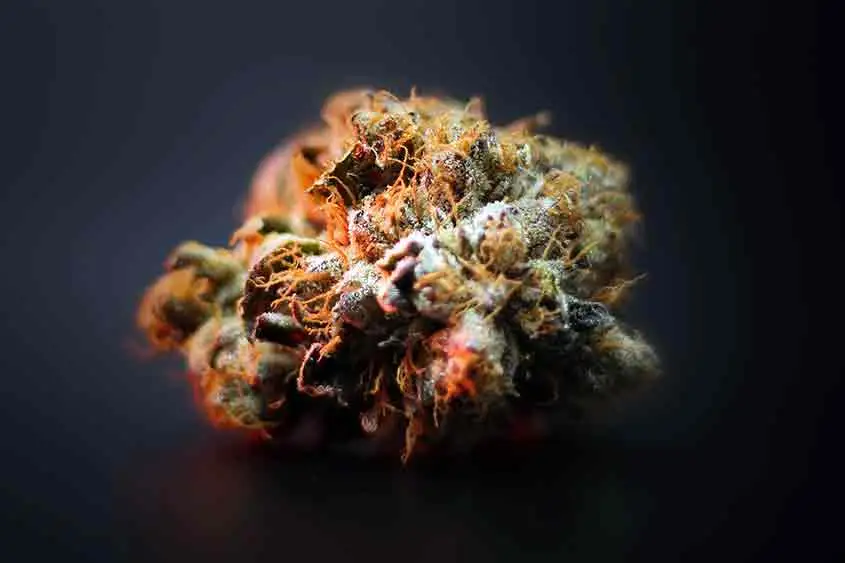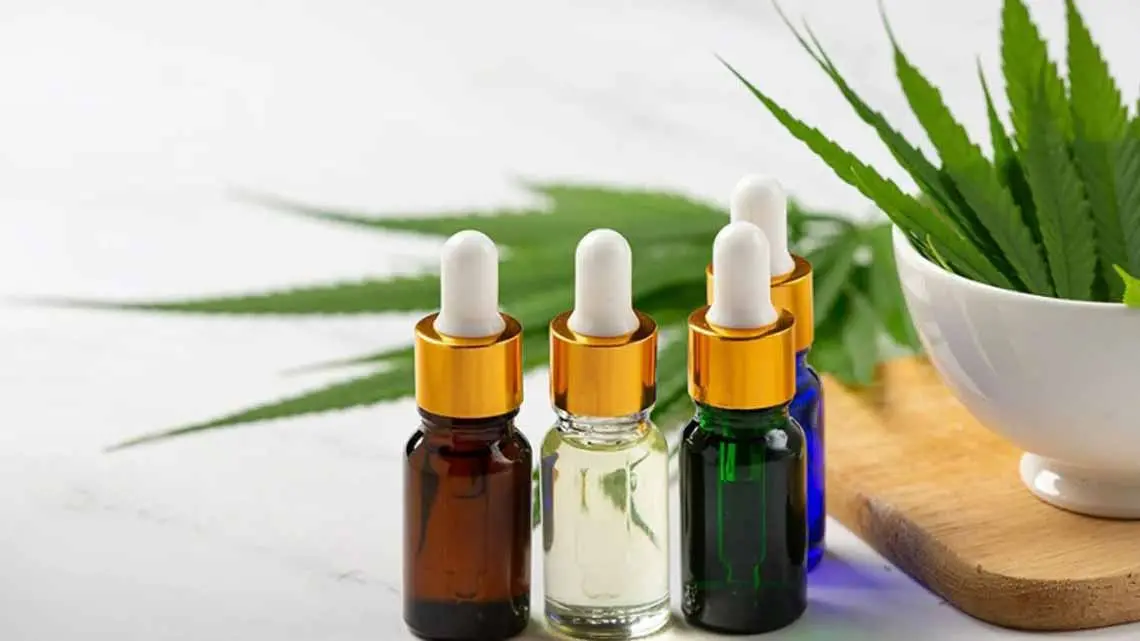The last decade or so has witnessed the legalization of medical marijuana in a large number of US states. As of now, over thirty states have passed laws permitting the use of marijuana for medical purposes. This situation reflects a significant shift in societal attitudes towards the drug. The change has led to the establishment of numerous medical marijuana dispensaries. As a result, we have a regulated and legal avenue for eligible individuals to obtain cannabis for therapeutic use. The move towards legalization has not only facilitated access for patients seeking relief from various ailments. It has also sparked a broader conversation about the potential benefits and risks associated with long-term marijuana use.
Given the growing prevalence of medical marijuana use, it is essential to understand the long-term impact of this controversial drug. Despite its legalization and increasing acceptance, marijuana remains a subject of heated debate, with opinions divided over its potential benefits and risks. Today, it is crucial to understand the scientific research and explore the long-term effects of medical marijuana consumption. Let us examine potential mental health issues, cognitive impacts, respiratory and cardiovascular health concerns, and links to specific types of cancer. Understanding these aspects is vital for patients, healthcare providers, and policymakers alike, as it helps balance the therapeutic benefits with the potential health risks.
Medical Marijuana: Mental Health Problems
Cannabis-infused beverages often contain specific amounts of CBD or THC. CBD drinks typically provide around 25mg of CBD per serving, while THC-infused options contain approximately 10mg of THC. These beverages are legally available from online retailers or brick-and-mortar stores that specialize in marijuana products. The standardized dosages ensure consistency and reliability for consumers seeking controlled experiences.

Schizophrenia and Psychosis
Smoking high-potency cannabis for a prolonged period has been found to escalate the risk of schizophrenia when compared with people who have never used marijuana. Studies indicate that individuals who use cannabis, especially in large quantities, are more likely to develop symptoms associated with schizophrenia. It is a severe mental disorder characterized by delusions, hallucinations, and cognitive challenges. The risk is higher in teenagers and young adults in their early twenties. Because their brains are still developing and are more vulnerable to the effects of high-THC cannabis. As a result, they could experience severe changes in perception, thought, and emotional responsiveness with prolonged marijuana use.
Depression and Anxiety
In addition to the heightened risk of psychosis, high marijuana consumption in adolescents is linked to the onset of depression and anxiety later in life. This risk appears to be particularly acute for teenage girls, who may be more vulnerable to the mood-altering effects of THC. Long-term studies have shown that individuals who began using marijuana heavily during their teenage are more likely to experience depressive symptoms and anxiety disorders in adulthood. This connection suggests that early and frequent use of marijuana can alter the brain’s natural chemistry. Potentially, it could lead to lasting emotional and psychological consequences.
Medical Marijuana & Cognitive Issues

Medical Marijuana: Impact of THC on the Brain
Marijuana comprises an active ingredient known as THC (tetrahydrocannabinol) that acts on cannabinoid receptors in the brain. These receptors affect learning, memory, appetite, coordination, and pleasure. They are part of the endocannabinoid system, which plays a crucial role in brain development and function. When THC binds to these receptors, it can disrupt the normal functioning of the endocannabinoid system, leading to alterations in various cognitive processes.
Effects on Young Adults
Research indicates that the most significant impact of chronic marijuana consumption happens in young adults who are still in the process of developing neural connections. The adolescent brain undergoes critical developmental changes. The introduction of THC during this period can interfere with the formation and pruning of neural connections. It can result in long-lasting changes to brain structure and function.
Impaired Neural Connectivity
One specific research study on teenagers found impaired neural connectivity in particular brain regions involved in executive functions such as memory, learning, and impulse control. Compared to non-marijuana users, those who consumed marijuana regularly showed reduced integrity of white matter, the brain’s communication pathways. This impairment can lead to difficulties in tasks that require executive functions, such as problem-solving, decision-making, and controlling impulses.
Medical Marijuana & Breathing Problems

Risks of Smoking Marijuana
As is the case with cigarette smokers, marijuana smokers are also at a higher risk of contracting lung infections, bronchitis, and chest colds. Inhaling the smoke from burning marijuana introduces a variety of harmful chemicals and irritants into the lungs. As a result, they can damage the respiratory system over time. Chronic marijuana smokers often report symptoms similar to those experienced by tobacco smokers, including persistent cough, phlegm production, and wheezing. The inhalation of marijuana smoke can also exacerbate existing respiratory conditions, such as asthma, making breathing more difficult.
Myths About Vaping
The myth that vaping marijuana is a comparatively harmless way of ingestion compared to smoking has long been busted. While vaping may reduce exposure to some of the harmful byproducts of combustion, it introduces other risks that are equally concerning. Vaping devices heat marijuana oil or extracts to produce an aerosol, which is then inhaled into the lungs. This process can release toxic substances, including heavy metals and volatile organic compounds, which can irritate and damage the lung tissue.
E-cigarette or Vaping Product Use-Associated Lung Injury (EVALI)
Additionally, it has come to light that vaping can result in E-cigarette or Vaping product use-Associated Lung Injury (EVALI). This potentially fatal lung condition causes severe breathing difficulties and may necessitate hospitalization. Symptoms of EVALI include shortness of breath, chest pain, and severe coughing, often accompanied by gastrointestinal issues such as nausea, vomiting, and abdominal pain. In severe cases, EVALI can lead to respiratory failure and death. The exact cause of EVALI is not fully understood, but it is believed to be linked to certain additives and contaminants found in some vaping products.
Heart Issues from Medical Marijuana?

Increased Blood Pressure
Marijuana smoking results in a sudden spike in blood pressure, which can be very risky for people with heart ailments. The active ingredient in marijuana, THC, causes an immediate increase in heart rate and a sharp rise in blood pressure. This acute cardiovascular response can place significant strain on the heart, especially in individuals who have preexisting heart conditions or are at risk for cardiovascular disease.
Risk of Heart Attack
Research studies have indicated that people who use marijuana are at an increased risk of heart attack after smoking, as opposed to people who don’t. The risk is particularly high in the first hour after smoking, during which the chance of experiencing a heart attack can increase significantly. This is due to the combination of elevated heart rate and blood pressure, which can trigger cardiac events in susceptible individuals. The stress placed on the heart by these physiological changes can lead to acute coronary syndrome, particularly in those with underlying heart disease.
Arrhythmias and Stroke
Moreover, researchers have found a link between marijuana consumption and arrhythmias, or improper beating of the heart. These irregular heartbeats can range from benign to severe and can increase the risk of stroke. Arrhythmias can disrupt the normal flow of blood through the heart, leading to the formation of blood clots. If these clots travel to the brain, they can cause a stroke, which is a serious and potentially life-threatening condition. Studies suggest that marijuana users may have a higher probability of experiencing a stroke compared to non-users. This is particularly more possible if they consume high-potency cannabis or use the drug frequently.
Testicular Cancer

Increased Risk of Testicular Germ Cell Tumors (TGCTs)
Research studies have linked marijuana consumption with a greater risk of a specific type of testicular cancer known as testicular germ cell tumors (TGCTs). This type of cancer is the most common malignancy in young men, typically affecting those between the ages of 15 and 35. The correlation between marijuana use and TGCTs has been observed in several studies, prompting further investigation into this potential health risk.
Findings from Research Studies
A well-known study conducted in 2015 concluded that marijuana usage once a week or for over 10 years was linked with an elevated risk of TGCTs. The researchers found that men who used marijuana regularly had a higher likelihood of developing this type of cancer compared to non-users. The study suggested that the risk might be associated with the duration and frequency of marijuana use. All in all, long-term and frequent users showed a greater propensity for developing TGCTs.
Possible Mechanisms
The exact mechanisms by which marijuana might increase the risk of TGCTs are not fully understood. However, it is hypothesized that the active compounds in marijuana, particularly THC, may disrupt the endocrine system and alter hormone levels in a way that promotes the development of these tumors. Additionally, THC and other cannabinoids can affect the functioning of the endocannabinoid system, which plays a role in cell growth and differentiation. This disruption could potentially lead to abnormal cell growth in the testes.
Implications for Health and Awareness
Understanding the potential link between marijuana use and testicular cancer is important for raising awareness and guiding public health recommendations. Men, particularly those in the high-risk age group, should be informed about the possible increased risk of TGCTs associated with long-term and frequent marijuana use. This information can help individuals make more informed choices about their marijuana consumption and encourage them to discuss any concerns with their healthcare providers.
Further research is needed to confirm these findings and to elucidate the underlying mechanisms connecting marijuana use with testicular cancer. In the meantime, awareness and caution are key, especially for young men who are the most susceptible to this type of cancer.
Use Medical Marijuana Safely

While medical marijuana can offer therapeutic benefits, it is important to use it responsibly to minimize potential risks. Here are some guidelines and best practices to help decrease the risks associated with medical marijuana consumption:
Follow Prescription Guidelines
- Use as Prescribed: Always follow the dosage and frequency recommended by your healthcare provider. Avoid using more than prescribed, as higher doses can increase the risk of adverse effects and dependency.
- Regular Consultations: Schedule regular check-ins with your healthcare provider to monitor your response to medical marijuana. Consequently, make any necessary adjustments to your treatment plan.
Choose Safe Consumption Methods
- Avoid Smoking and Vaping: To reduce respiratory risks, consider alternative methods of consumption such as edibles, tinctures, or capsules. These methods do not involve inhaling smoke or vapor, thus protecting your lungs.
- Quality Products: Use products from reputable sources that have been tested for purity and potency. Avoid products that contain harmful additives or contaminants.
Be Aware of Mental Health Effects
- Monitor Mental Health: Be vigilant about any changes in your mental health. If you notice symptoms of anxiety, depression, or psychosis, seek medical advice promptly.
- Age Considerations: Younger individuals, especially teenagers, should be particularly cautious due to the higher risks of mental health issues. Consider the age-appropriateness and necessity of using medical marijuana in younger populations.
Protect Cardiovascular Health
- Know Your Heart Health: If you have preexisting heart conditions, discuss the risks with your doctor. They might recommend lower doses or alternative treatments.
- Avoid High THC Strains: Choose strains with balanced or lower THC levels to minimize cardiovascular strain. CBD-dominant strains can provide therapeutic effects without the intense psychoactive impact of high-THC strains.
Reduce Long-Term Risks
- Limit Duration: If possible, use medical marijuana for the shortest duration necessary. Prolonged use can increase the likelihood of long-term health issues.
- Rotate Treatment Options: Consider integrating other therapies and treatments into your regimen to reduce reliance on medical marijuana.
General Best Practices
- Stay Informed: Keep up-to-date with the latest research and guidelines on medical marijuana. Knowledge is key to using it safely and effectively.
- Educate Yourself: Understand the potential side effects and risks associated with medical marijuana use. This awareness can help you identify and address issues early on.
- Lifestyle Factors: Maintain a healthy lifestyle, including regular exercise, a balanced diet, and good sleep hygiene. These factors can mitigate some of the negative impacts associated with medical marijuana use.
By adhering to these guidelines, patients can reduce the risks associated with medical marijuana while still benefiting from its therapeutic properties. Responsible use is crucial to maximize benefits and minimize potential harm.
Conclusion
The legalization of medical marijuana across numerous US states has sparked significant debate regarding its long-term impacts. While it offers therapeutic benefits, extensive research highlights potential risks, including mental health issues such as schizophrenia, depression, and anxiety, particularly among young users. Cognitive impairments, respiratory problems, cardiovascular issues, and an increased risk of certain cancers, such as testicular germ cell tumors, have also been associated with long-term marijuana use. To mitigate these risks, it is crucial to adhere to medical guidelines, choose safer consumption methods, and remain informed about ongoing research. Responsible use, guided by healthcare professionals, ensures that patients can safely benefit from medical marijuana’s therapeutic effects while minimizing potential harm.
Consult a healthcare professional before using cannabis products; the advice provided is not a substitute for medical guidance.

